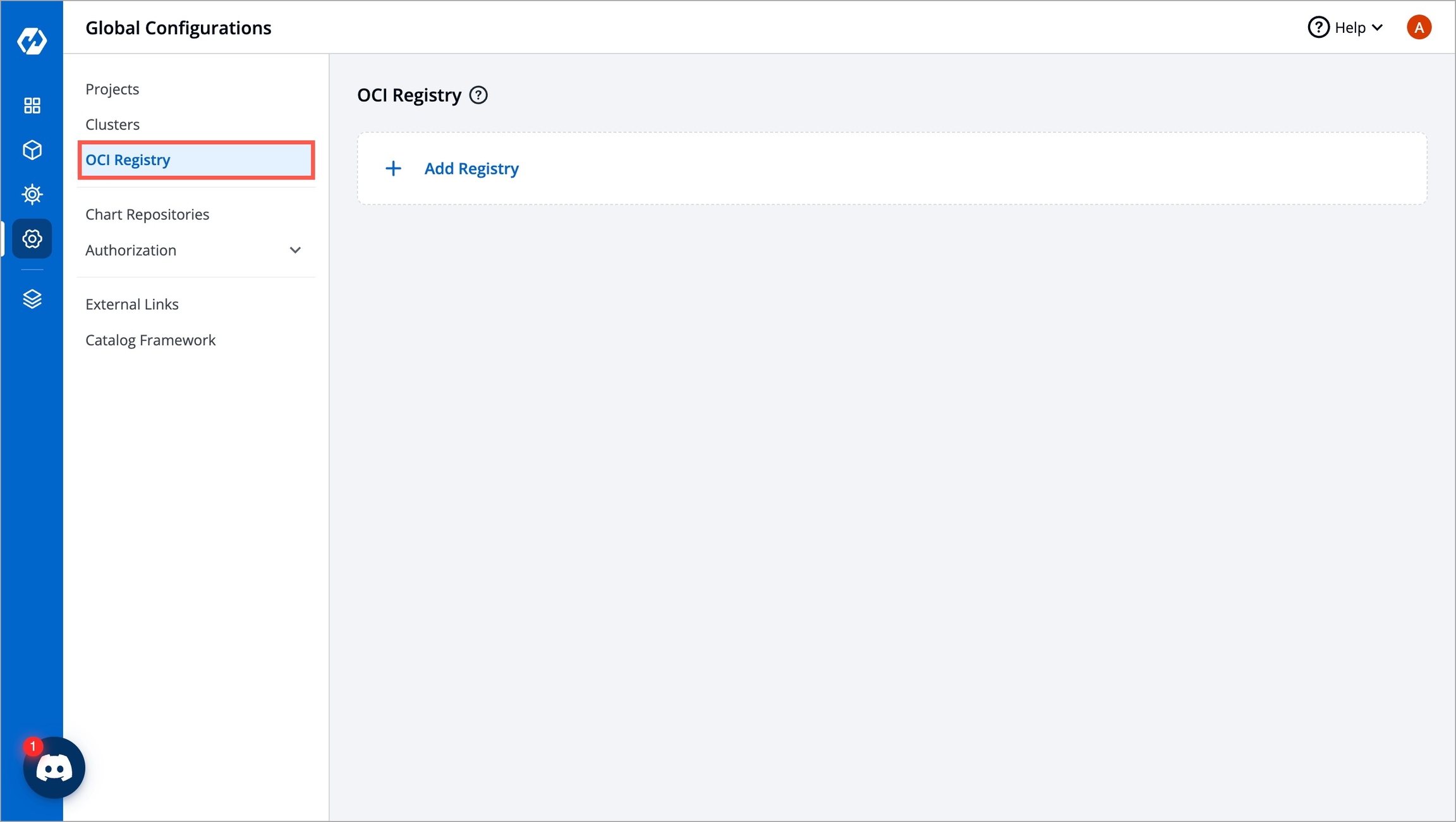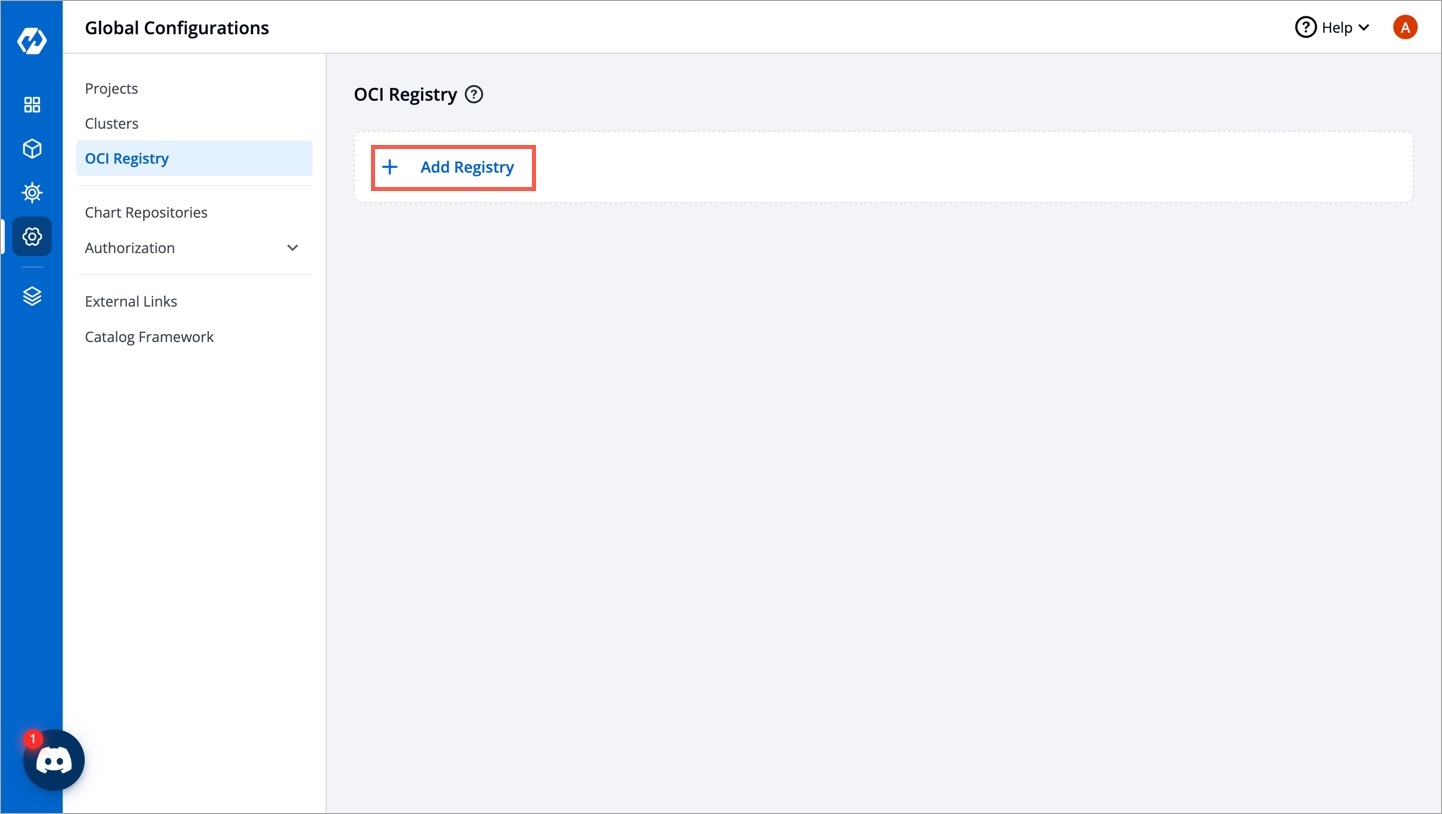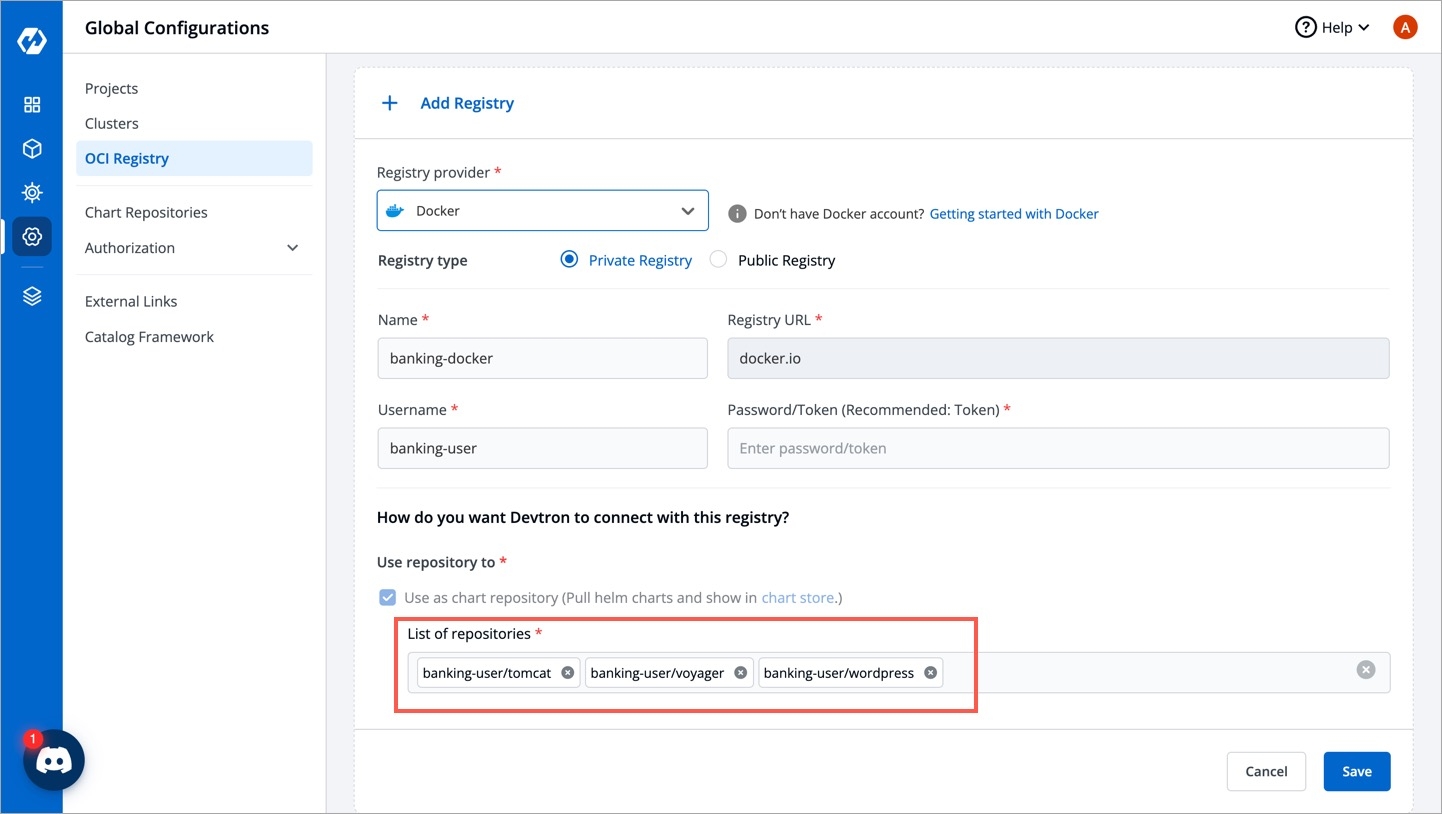OCI Registry
If you have helm charts stored in your OCI registry, you can add the OCI registry to Devtron's Modern Kubernetes Dashboard and pull those helm charts to Devtron's [Chart Store].
You can configure an OCI registry using any registry provider of your choice, including:
ECR
Docker
Azure
Artifact Registry (GCP)
Quay
Add Registry
From the left sidebar, go to Global Configurations → OCI Registry.

Figure 1: OCI Registry Click Add Registry.

Figure 2: Add a Registry Choose a provider from the Registry provider dropdown. View the Supported Registry Providers.

Figure 3: Choose a Provider Under Registry type, you get the following options:
Private Registry: Choose this if your artifacts are hosted or should be hosted on a private registry restricted to authenticated users of that registry. Selecting this option requires you to enter your registry credentials (username and password/token).
Public Registry: Unlike private registry, this doesn't require your registry credentials. Only the registry URL and repository name(s) would suffice.
Assuming your registry type is private, here are few of the common fields you can expect:
FieldsDescriptionName
Provide a name to your registry
Registry URL
Provide the URL of your registry in case it doesn't come prefilled. Do not include
oci://,http://, or/https://in the URL.Authentication Type
The credential input fields may differ depending on the registry provider, check Registry Providers
Use as chart repository
Tick this checkbox if you want Devtron to pull helm charts from your registry and display them on chart store. Also, you will have to provide a list of repositories (present within your registry) for Devtron to successfully pull the helm charts.
Click Save.
Use as Chart Repository
Unlike Helm repos, OCI registries do not have an index file to discover all the charts. If you have helm charts pushed to your OCI registry, you can use that registry as a chart repository.
Upon enabling this option, Devtron can use your OCI registry as the chart source and pull the helm charts to display them on your Chart Store for easy deployment.
Tutorial
Steps
Search your OCI registry in the list and click it.
In the List of repositories field, add your chart repo(s). The format should be username/chartname. You can find the username from your registry provider account.

Supported Registry Providers
ECR
Amazon ECR is an AWS-managed container image registry service. The ECR provides resource-based permissions to the private repositories using AWS Identity and Access Management (IAM). ECR allows both Key-based and Role-based authentications.
Before you begin, create an IAM user and attach the ECR policy according to the authentication type.
Provide the following additional information apart from the common fields:
Registry URL
Example of URL format: xxxxxxxxxxxx.dkr.ecr.<region>.amazonaws.com where xxxxxxxxxxxx is your 12-digit AWS account ID
Authentication Type
Select one of the authentication types:
EC2 IAM Role: Authenticate with workernode IAM role and attach the ECR policy (AmazonEC2ContainerRegistryFullAccess) to the cluster worker nodes IAM role of your Kubernetes cluster.
User Auth: It is a key-based authentication, attach the ECR policy (AmazonEC2ContainerRegistryFullAccess) to the IAM user.
Access key ID: Your AWS access keySecret access key: Your AWS secret access key ID
Docker
Provide the following additional information apart from the common fields:
Username
Provide the username of the Docker Hub account you used for creating your registry.
Password/Token
Provide the password/Token corresponding to your docker hub account. It is recommended to use Token for security purpose.
Azure
For Azure, the service principal authentication method can be used to authenticate with username and password. Visit this link to get the username and password for this registry.
Provide the following additional information apart from the common fields:
Registry URL/Login Server
Example of URL format: xxx.azurecr.io
Username/Registry Name
Provide the username of your Azure container registry
Password
Provide the password of your Azure container registry
Artifact Registry (GCP)
JSON key file authentication method can be used to authenticate with username and service account JSON file. Visit this link to get the username and service account JSON file for this registry.
Remove all the white spaces from JSON key and wrap it in a single quote before pasting it in Service Account JSON File field
Provide the following additional information apart from the common fields:
Registry URL
Example of URL format: region-docker.pkg.dev
Service Account JSON File
Paste the content of the service account JSON file
Quay
Provide the following additional information apart from the common fields:
Username
Provide the username of your Quay account
Token
Provide the password of your Quay account
Other
Provide below information if you select the registry type as Other.
Registry URL
Enter the URL of your private registry
Username
Provide the username of your account where you have created your registry
Password/Token
Provide the password or token corresponding to the username of your registry
Advanced Registry URL Connection Options
Allow Only Secure Connection: Tick this option for the registry to allow only secure connections
Allow Secure Connection With CA Certificate: Tick this option for the registry to allow secure connection by providing a private CA certificate (ca.crt)
Allow Insecure Connection: Tick this option to make an insecure communication with the registry (for e.g., when SSL certificate is expired)
Last updated